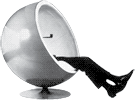Equational reasoning
Example of type restriction
From the Functoriality of Category Theory for Programmers I came across some "equational reasoning" for deriving relation between >=> (fish operator) and fmap.
fmap :: Functor f => (a -> b) -> f a -> f b
(>=>) :: (a -> Writer b) -> (b -> Writer c) -> (a -> Writer c)
id :: a -> a
-- gives
fmap f = id >=> (\x -> return (f x))
Bartosz tries to explain it, but I still don't see it clearly.
"Here, the fish operator combines two functions: one of them is the familiar id, and the other is a lambda that applies return to the result of acting with f on the lambda’s argument. The hardest part to wrap your brain around is probably the use of id. Isn’t the argument to the fish operator supposed to be a function that takes a “normal” type and returns an embellished type? Well, not really. Nobody says that a in a -> Writer b must be a “normal” type. It’s a type variable, so it can be anything, in particular it can be an embellished type, like Writer b.
So id will take Writer a and turn it into Writer a. The fish operator will fish out the value of a and pass it as x to the lambda. There, f will turn it into a b and return will embellish it, making it Writer b. Putting it all together, we end up with a function that takes Writer a and returns Writer b, exactly what fmap is supposed to produce."
One part I don't understand is related to the following.
Prelude> let f0 :: a -> Maybe a; f0 a = Just a
Prelude> let f1 :: (a -> Maybe b) -> a -> Maybe b; f1 f a = f a
Prelude> :t f1 f0
f1 f0 :: b -> Maybe b -- this part I do understand
Prelude> :t f1 id
f1 id :: Maybe b -> Maybe b -- but not this one
What is the best way to tackle these problems?
I got some help from a college, Lars. The type Maybe b -> Maybe b may be seen as restriction on the more general a -> Maybe b and also a -> a, but they are still compatible types. So f1 id is the same as f1 f0 with the additional restriction that first argument is of type Maybe b.
Group Theory
Group
Definition: An algebraic structure consisting of a set of elements equipped with an operation that combines two elements to form a third element
Example: Integers (Z) together with addition (.)
Axioms:
- Closure - for
aandbinGa.bis also inG - Associativity -
(a.b).c = a.(b.c) - Unique identity element (
e) -e.a = a.e = a - Inverse element - for every element
athere is an inverse elementb = inv(a)(or $$a^-1$$) wherea.b = b.a = e
Cyclic group
A group where all elements are powers of a particlular element a
e, a, a.a, a.a.a, ...
Finite group
A group with finite number of elements
Category
A group with only associativity (2) and identity (3) axioms required
Note that associativity axiom should be the same as existence of function composition. In other words ...
Category definition: The ability to compose the arrows associatively and the existence of an identity arrow for each object.
Homomorphism
Definition: a map between two algebraic structures of the same type (that is of the same name), that preserves the operations of the structures
For operation * and mapping f: A -> B this means that
f(a * b) = f(A) * f(B)
Isomorphism
Definition: A homomorphism which admits an inverse
if g is the inverse to f then f.g = id i.e. identity morphism
Inital and terminal object
an initial object of a category C is an object I in C such that for every object X in C,
there exists precisely one morphism I -> X.
T is terminal if for every object X in C there exists a single morphism X -> T
